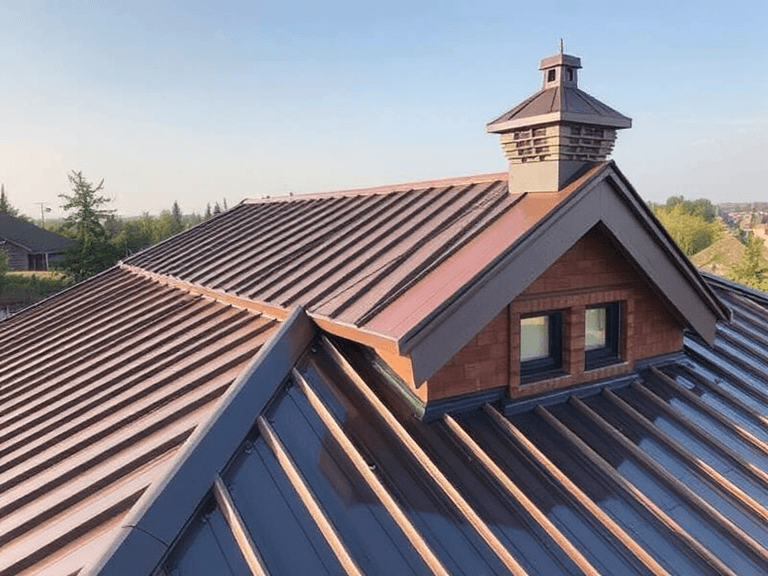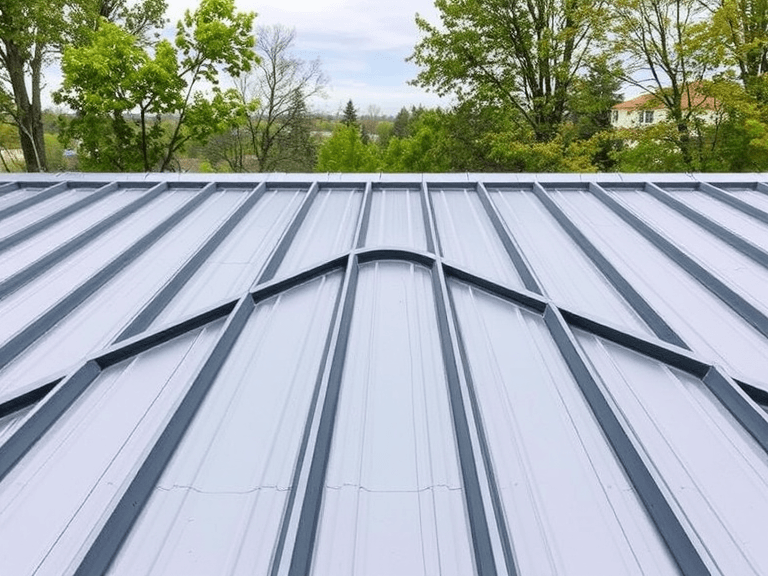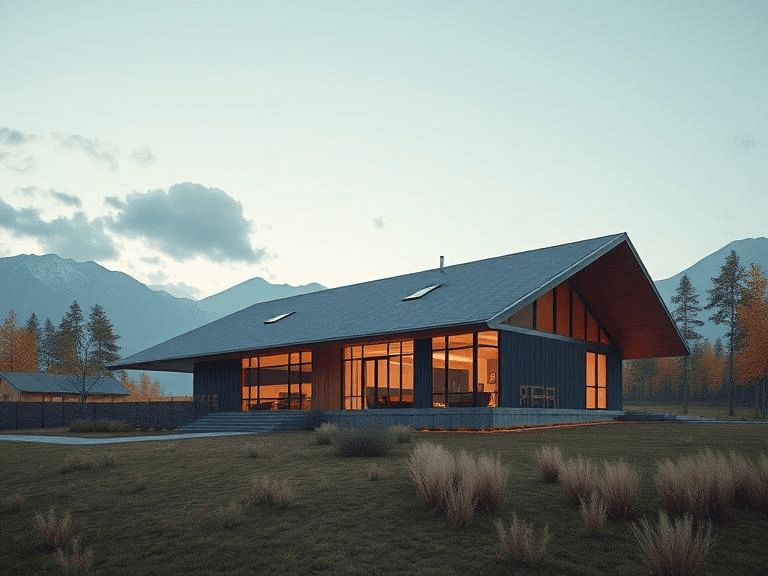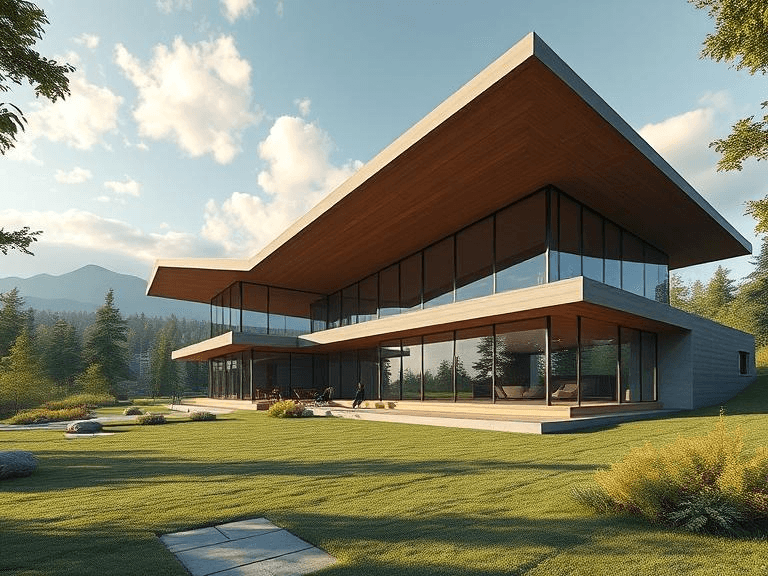
Metal roofing refers to a type of roofing system that is made from various metal materials, each offering unique properties and benefits. The most common materials used in metal roofing include steel, aluminum, copper, and zinc. Each of these options varies in terms of durability, weight, cost, and appearance, allowing homeowners to select a metal roofing solution that meets their specific needs and aesthetic preferences. For instance, steel is often valued for its strength and affordability, while copper is renowned for its timeless allure and natural patina that develops over time.
In recent years, metal roofing has gained significant popularity among homeowners and builders alike. This trend can be attributed to several factors, including advances in manufacturing techniques, which have enhanced the aesthetics and performance of metal roofs. Furthermore, metal roofing is recognized for its longevity, often lasting over 50 years with proper maintenance. It is also known for its resilience against harsh weather conditions, including heavy rain, snow, and high winds, making it an appealing option in various geographic areas.
Moreover, energy efficiency is another key reason for the growing preference for metal roofing. Many modern metal roofs are designed with reflective properties that help reduce cooling costs during hotter months. Additionally, metal roofing is often considered a sustainable choice, as it can be made from recycled materials and is 100% recyclable at the end of its life cycle. As environmental concerns continue to shape consumer choices, the advantages of metal roofing become increasingly relevant.
Despite its many benefits, it is essential to consider the potential drawbacks of metal roofing as well. Factors such as initial installation costs, noise during rain, and potential for denting may influence decisions. As we delve deeper into the pros and cons, understanding the foundational aspects of metal roofing will help inform homeowners about whether this option is suitable for their roofing needs.
Advantages of Metal Roofing
Metal roofing has become an increasingly popular choice among homeowners and builders alike due to its numerous advantages. One of the most significant benefits is its exceptional durability and longevity. Metal roofs are designed to withstand harsh weather conditions, including heavy rain, strong winds, and hail, making them a reliable option for various climates. According to the Metal Roofing Alliance, metal roofs can last 40 to 70 years, compared to traditional asphalt shingles that may only last 15 to 20 years.
Energy efficiency is another compelling aspect of metal roofing. Its reflective surface can significantly reduce heat absorption in warmer climates, leading to lower cooling costs. Studies have shown that metal roofing can reflect 20 to 90 percent of solar energy, depending on the specific color and coating used, effectively keeping homes cooler on hot days. This energy efficiency not only contributes to cost savings for homeowners but also reduces the overall environmental impact.
Low maintenance requirements further enhance the appeal of metal roofing. Unlike other roofing materials that may require regular inspections and repairs, metal roofs generally need minimal upkeep. Their resistance to cracking, shrinking, and erosion means that owners can save on both labor and material costs in the long run. Additionally, metal roofing is often compatible with solar panel installations, providing homeowners the opportunity to harness renewable energy and reduce their carbon footprint.
Moreover, the sustainability of metal roofing cannot be overlooked. Many metal roofs are made from recycled materials and can be recycled again at the end of their life cycle. This aspect aligns with growing environmental consciousness among consumers, making metal roofing a responsible choice for those concerned about sustainability. Overall, the advantages of metal roofing make it a compelling option that offers long-term benefits in durability, efficiency, and ecological impact.
Disadvantages of Metal Roofing
While metal roofing offers numerous benefits, it is essential to consider its potential drawbacks before making a decision. One of the most significant disadvantages is the upfront cost. Metal roofs tend to be more expensive than traditional materials such as asphalt shingles or wood, which could make them less appealing for budget-conscious homeowners. The long-term savings associated with metal roofing, due to its durability and energy efficiency, may not offset the initial investment for everyone.
Another concern is the noise factor associated with rain or hail hitting a metal roof. Unlike traditional roofing materials, metal can amplify sounds, potentially creating a nuisance during inclement weather. Homeowners living in areas prone to heavy rainfall or hail storms may find this characteristic bothersome, particularly if they prefer a quieter environment within their homes.
Additionally, metal roofing can experience expansion and contraction due to temperature fluctuations. This movement may lead to a requirement for special fasteners or installation techniques to ensure a secure fit throughout the seasons. Poor installation or inadequate clearance can cause buckling or damaging effects, ultimately reducing the lifespan of the roof.
Susceptibility to denting is another concern, particularly for softer metals. While metal roofs are often touted for their resilience, materials like aluminum can be prone to dents from hail or falling debris. Homeowners should be aware of the specific type of metal used, as some options are more resistant to such damage than others.
Lastly, while many now appreciate the aesthetics of modern metal roofs, some homeowners still harbor traditional views regarding roofing materials. There may be a perception that metal roofs are less visually appealing compared to conventional ones, which could influence a homeowner’s choice.
Cost Comparison of Roofing Materials
The choice of roofing material significantly influences both initial investment and long-term financial considerations. Among the various options available, metal roofing stands out for its durability and longevity, which merits a thorough exploration in comparison to other popular materials such as asphalt shingles, wood shakes, and tile.
Initially, the cost of metal roofing is often higher than that of asphalt shingles, which represent one of the most economical choices on the market. While asphalt shingles typically range from $90 to $100 per square, metal roofing materials can range from $150 to upwards of $300 per square, depending on the type of metal and system used. However, this initial cost must be balanced against the lifespan and benefits of metal roofing.
In terms of longevity, metal roofs can last 40 to 70 years, significantly outpacing the typical 15 to 30 years of asphalt shingles. This extended durability translates to fewer replacements and, subsequently, lower costs over time. Furthermore, metal roofing materials generally feature a range of energy-efficient options, which can contribute to reduced heating and cooling expenses—offsetting the initial outlay more effectively than traditional options.
Installation costs for metal roofing may also be higher, primarily due to the specialized skills and tools required for proper installation. Nevertheless, with several metal roofing systems available, including standing seam, corrugated, and metal tiles, homeowners have options that can vary in terms of labor intensity and complexity.
Maintenance is another critical factor to consider. Metal roofs are highly resistant to weather-related damage and do not require regular replacement, unlike wood shakes and asphalt shingles, which often require substantial maintenance and eventual replacement. The total cost of ownership for a metal roof can be lower over time compared to these alternatives. In summary, while the upfront cost of metal roofing may be higher, its longevity, reduced maintenance requirements, and energy efficiency can provide significant savings in the long run, making it a strong contender in roofing choices.

Environmental Impact of Metal Roofing
Metal roofing has emerged as a popular choice among homeowners, particularly for its environmental advantages. One of the foremost benefits of metal roofing is its recyclability. Unlike traditional roofing materials, such as asphalt shingles, metal roofs can be fully recycled at the end of their life cycle. This means that when a metal roof reaches the end of its service life, it can be repurposed into new roofing materials or other metal products, significantly reducing landfill waste. According to industry estimates, over 90% of metal roofing can be recycled, making it a highly sustainable option.
Another critical aspect of the environmental impact of metal roofing is its energy efficiency. Metal roofs reflect solar radiant heat, which can significantly decrease cooling costs during hot months. By maintaining a lower thermal mass, homes equipped with metal roofs can achieve higher energy efficiency, which contributes to a decrease in overall energy consumption. Over time, this helps in reducing greenhouse gas emissions tied to energy production. Additionally, many metal roofs have a high solar reflectance index (SRI), which can contribute positively to a home’s energy rating.
Furthermore, many manufacturers are now offering metal roofing options made from sustainable sources. This includes using recycled materials in the production of new metal roofing elements, which not only minimizes resource extraction but also enhances the sustainable profile of these products. Homeowners who choose sustainably sourced metal roofing materials are actively making decisions that can limit environmental impact and promote responsible consumption. In summary, selecting metal roofing can yield various environmental benefits, making it an effective choice for those looking to reduce their ecological footprint while enhancing their home’s energy efficiency and sustainability credentials.
Installation Considerations for Metal Roofing
When contemplating the installation of a metal roof, it is essential to engage qualified professionals who possess experience in this specialized field. Unlike traditional roofing materials, metal roofing demands a heightened level of expertise due to its unique properties and installation techniques. Hiring certified contractors ensures that the roof is installed according to manufacturer specifications and local codes, ultimately contributing to the roof’s longevity and performance.
One must also consider that metal roofing materials can be significantly heavier than conventional options, necessitating potential structural adjustments. Before installation, a thorough assessment of the existing roof structure is critical. This evaluation will help identify whether reinforcements or modifications are needed to support the added weight of the metal panels. A well-prepared framework is crucial, as it ensures that the metal roof maintains its integrity and performance over time.
To achieve a successful installation, adhering to best practices is imperative. This includes using the appropriate underlayment to create a robust moisture barrier and selecting the right fasteners for secure attachment. Additionally, the installation should account for proper ventilation; this not only helps in temperature regulation but also prolongs the lifespan of the roofing system by preventing condensation build-up.
It is important to be mindful of common pitfalls during the installation process. Issues such as inadequate fastening, improper alignment of panels, or neglecting thermal expansion can result in leaks or premature wear and tear. To avoid these mistakes, meticulous attention must be paid to detail, including regular inspections throughout the installation phase and following the manufacturer’s guidelines closely. By prioritizing these installation considerations, homeowners can ensure that their metal roofing system meets high standards of durability and functionality.
Maintenance of Metal Roofing
Metal roofing is known for its durability, but it still requires maintenance to ensure optimal performance and longevity. Regular inspections and cleaning are essential components of metal roof upkeep. It is recommended to inspect metal roofs at least twice a year, preferably in the spring and fall. These inspections allow homeowners to identify potential issues such as loose screws, damaged panels, or signs of rust that might require attention before they escalate into more significant problems.
Cleaning is another crucial aspect of metal roofing maintenance. It is important to remove any debris such as leaves, twigs, or moss that may accumulate on the roof’s surface. For cleaning, a simple solution of mild detergent mixed with water can be effective. Homeowners should use a soft-bristle brush or a cloth to scrub the surface as harsher tools may scratch the finish of the metal. Additionally, using a low-pressure hose to rinse off the detergent and residue is advisable to prevent any damage.
To combat the natural elements, treatments to prevent rust or corrosion are vital, particularly in areas with high humidity or heavy rainfall. Many metal roofing systems come with a protective coating that helps resist corrosion, but over time, this can wear off. Applying a sealant designed for metal roofing can help to extend the life of the roof by providing an additional barrier against moisture and rusting. It is generally recommended to reapply this protective treatment every few years, depending on the roof’s exposure to harsh weather conditions.
Overall, maintenance requirements for metal roofing differ significantly from other roofing types, such as asphalt shingles or tile roofs. Unlike asphalt shingles that may require periodic replacement due to wear and tear, metal roofing can often outlast these materials with proper care. By investing time in regular maintenance, homeowners can maximize the lifespan of their metal roofs and ensure ongoing protection for their home.
Case Studies: Real-life Experiences with Metal Roofing
The decision to install metal roofing is increasingly popular among homeowners, driven by its durability and aesthetic appeal. However, individual experiences can vary significantly. To provide a balanced perspective, this section highlights the real-life experiences of several homeowners who have opted for metal roofing.
One homeowner in a coastal region installed metal roofing to combat the harsh marine environment. They reported significant satisfaction due to the roof’s resistance to rust and corrosion, which are common concerns in areas with high humidity and salt exposure. This homeowner noted that, after several storms, their metal roof remained intact, unlike their neighbors’ traditional shingles, which frequently required repairs. The long-term durability helped them appreciate the initial investment in metal roofing, as maintenance costs were considerably lower than anticipated.
Conversely, another homeowner in the Midwest experienced challenges regarding noise levels during rainstorms. While they appreciated the roof’s insulation properties in winter, they were initially unprepared for the sound during heavy rainfall. This homeowner subsequently addressed the issue by adding insulation beneath the metal panels, significantly reducing the noise. This alteration enhanced their overall satisfaction with their metal roof, illustrating how adjustments can be made to address specific concerns.
Furthermore, a family residing in a suburban area highlighted the aesthetic appeal of their metal roof, particularly its ability to mimic the look of traditional shingles while providing enhanced durability. They chose a color that complemented their home, contributing to a significant increase in their property’s curb appeal. However, the initial higher cost of installation was a consideration for them, demonstrating the trade-off between upfront investment and long-term benefits.
These narratives underscore the importance of considering both advantages and disadvantages when selecting metal roofing, as individual experiences can inform future decisions for prospective homeowners.
Conclusion: Is Metal Roofing Right for You?
Metal roofing has increasingly gained popularity among homeowners due to its distinct advantages, as well as some notable drawbacks. Understanding these aspects can greatly assist in determining whether metal roofing aligns with your specific needs and conditions.
One of the primary benefits of metal roofing is its durability. Metal roofs can withstand severe weather conditions, including heavy snowfall, strong winds, and hail. This longevity often results in reduced maintenance costs over time, making it an economic choice for many. Moreover, metal roofing reflects solar radiant heat, leading to improved energy efficiency in homes, especially in regions with hot climates. This can translate to lower energy bills, which is a significant consideration for cost-conscious individuals.
On the other hand, the initial investment for metal roofing can be considerably higher than traditional materials like asphalt shingles. This upfront cost can be a deciding factor for homeowners on a tight budget. Additionally, the installation of metal roofing typically requires professional expertise, which may add to the overall expenses. Furthermore, while metal roofing offers a modern aesthetic, it may not resonate with everyone’s design preferences, particularly in neighborhoods with historical architecture where the visual impact of a metal roof might be less desirable.
When evaluating if metal roofing is suitable for you, it’s important to consider your local climate, financial situation, and personal style preferences. In some cases, the long-term savings and durability may outweigh the higher initial costs, particularly for those living in areas prone to extreme weather. Ultimately, weighing these pros and cons holistically can help ensure you choose the best roofing solution for your home.


